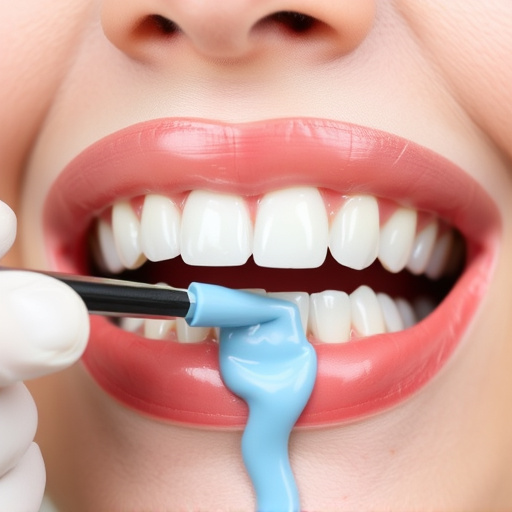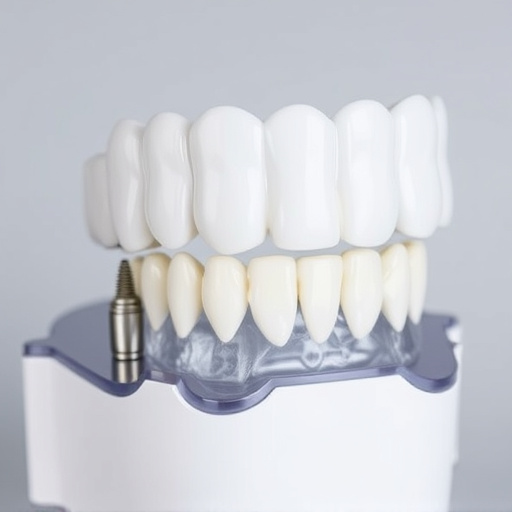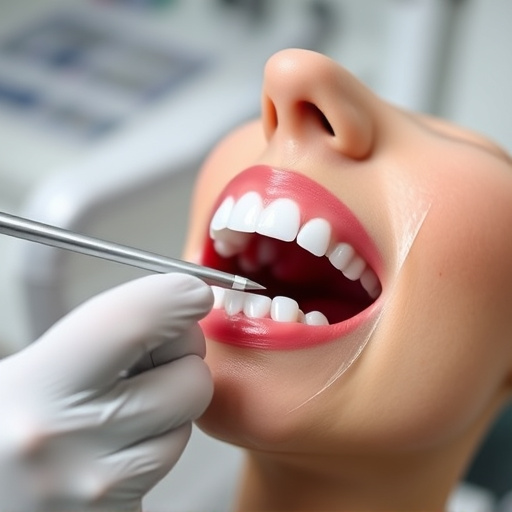Dental sealants for teeth are protective coatings applied to molars and premolars to block bacteria, food particles, and plaque, preventing tooth decay. Especially beneficial for children, they can also be used by adults during routine dental visits. By filling pits and cracks, these sealants create a smooth, durable shield, reducing the need for restorative dentistry and enhancing overall oral health.
Dental sealants for teeth are an effective, preventive care solution for maintaining a healthy smile. This article explores how these protective coatings work as a shield against tooth decay and bacteria. By sealing out pits and cracks where food particles can get stuck, dental sealants prevent cavities and promote overall oral health. Beyond aesthetics, they offer crucial benefits in terms of long-term dental wellness, making them a game-changer in routine dentistry.
- Understanding Dental Sealants: A Protective Shield
- How They Work: Sealing Out Pits and Cracks
- Benefits Beyond Aesthetics: Preventive Care for Teeth
Understanding Dental Sealants: A Protective Shield

Dental sealants for teeth act as a protective shield, serving as a barrier between your teeth and potential harm. These thin, durable coatings are applied to the chewing surfaces of back teeth (molars and premolars) where tooth decay is most likely to occur. By sealing out bacteria, food particles, and plaque—the primary causes of cavities—dental sealants play a crucial role in preventive dentistry. They’re particularly beneficial for children, but adults can also benefit from this protective measure during routine dental visits, alongside regular dental cleanings and routine oral exams.
Beyond their role in preventing decay, dental sealants also make it easier to maintain good oral health. By keeping teeth clean and free of bacteria, they reduce the risk of developing tooth infections and other related issues. This, in turn, can lead to less need for restorative dentistry procedures down the line, making them a valuable addition to any comprehensive oral care routine.
How They Work: Sealing Out Pits and Cracks

Dental sealants for teeth are a preventive measure designed to protect against decay and damage. They work by filling in pits and cracks on the tooth surface, creating a smooth, protective layer. This barrier prevents food particles and bacteria from settling into these hard-to-reach areas, which is where cavities often start.
When applied, sealants bond to the tooth enamel, forming a durable shield. This is particularly important for molars and premolars, as they have numerous pits and grooves that can trap plaque and debris. While regular brushing and flossing remove most food particles, sealants provide an extra layer of protection, especially after wisdom tooth removal or in cases where emergency dental care isn’t readily available. By sealing out these potential sources of decay, dental sealants for teeth help maintain overall oral health and reduce the need for costly tooth repair procedures.
Benefits Beyond Aesthetics: Preventive Care for Teeth

Dental sealants for teeth go beyond enhancing aesthetics, serving as a powerful tool in preventive care. These protective coatings are applied to the chewing surfaces of back teeth, creating a barrier against bacteria and food particles that can cause tooth decay. By sealing out potential hazards, dental sealants for teeth reduce the risk of cavities and other dental issues, promoting long-term oral health.
This simple yet effective procedure is especially beneficial for children, whose teeth are still developing. However, adults can also benefit from dental sealants as a proactive measure against tooth decay. When combined with regular brushing, flossing, and visits to your family dentistry practice, dental sealants for teeth contribute to the overall health of your smile, potentially delaying or even eliminating the need for more extensive treatments like dental crowns or implants in the future.
Dental sealants for teeth are an effective, preventive care solution for protecting your smile. By sealing out pits and cracks, these protective shields help ward off tooth decay and other oral health issues. Beyond their role in maintaining aesthetics, sealants contribute to overall well-being by promoting a healthy mouth, saving you time and money on dental repairs, and ensuring a bright, lasting smile.














